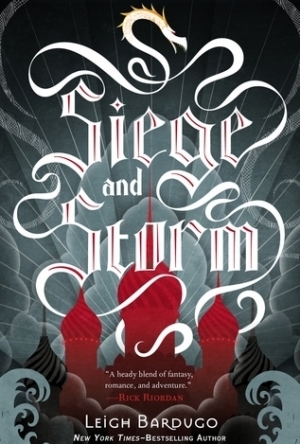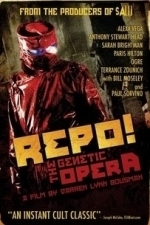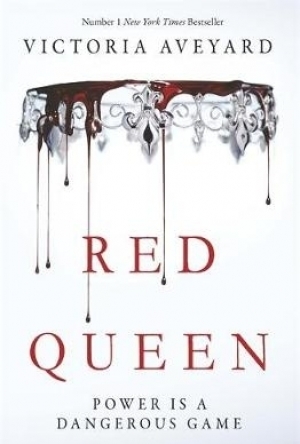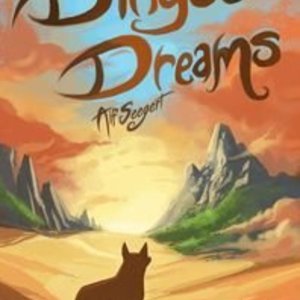Search
Becs (244 KP) rated Siege and Storm in Books
Aug 25, 2019
Nikolai (2 more)
the Darkling
THAT ENDING
has major middle book syndrome (3 more)
main character is still annoying
mal is still a horrible character
there wasn't a lot of the Darkling when the books are supposed to be about him as a villain
Has middle book syndrome B A D but the last half of the book is great!
You can also find this review on my blog: bookingwayreads.wordpress.com
TRIGGER WARNINGS: torture, murder, war themes, hallucinations, death, blood, manipulation, violence
Review:
I originally rated this 4 out of 5 stars but I am dropping it down to 3.5 out of 5 stars as I’ve had a lot of time to think about my review and have realized that Siege and Storm has middle book syndrome.
My one problem with Siege and Storm, is that it needed more of the Darkling in it. The Shadow and Bone Trilogy is about the Darkling being the villain and Siege and Storm did not deliver. You’d think there would have been more of a prescense, but there was just not enough of him! Please take Mal away and replace him with the Darkling!! Also, what in the good lordy fucks was that ending Leigh?! ARE YOU TRYING TO KILL US!? I. AM. DEAD.
I still have an ever growing dislike for Mal. He doesn’t have one bit of empathy in his body and it’s so frustrating! Like he’s supposed to be that rock that Alina can fall back onto for support and he’s just being a douche about her having powers. Can we just replace all of Mal’s scenes with more of my BB’s Nikolai and the Darkling plz?! Nikolai had the best character development and was the most relatable in the entire series thus far.
I’ve not really grown to like Alina as much like others do, as she’s still the same annoying girl that I wish wasn’t as special as she is. One thing I do like about her though, is the whole anti hero darkness she has brewing along with the inner turmoil she’s dealing with. With her new found power enhancements, but I just wish her powers weren’t vaguely talked about.
Another thing I wasn’t entirely a fan of was the love triangle *cough cough* love SQUARE *cough cough* trope that took place throughout the novel. Don’t get me wrong, it was extremely well-written and really filled in some (read: a lot of the) boring parts. BUT, this trope is extremely overrated and can really ruin a novel. It was rather annoying that Alina had all of these men to choose from and she couldn’t make up her mind about any of them. Plus, I don’t think she deserves any of them. So… yea.
Okay, onto the story itself. The first half was… such… a… bore… It was so freaking slow and I wanted to give up on it so much. It also kind of put me into a slump on picking up Ruin and Rising. I just didn’t want to be disappointed like I was with Siege and Storm. The second half of the story on the other hand, was packed to the max with intense scenes and action. I honestly thought my wittle heart would crack into a million pieces.
Leigh’s writing style is extremely unique and well-done. She’s able to write scenes that not only grip your attention, but will also pluck each heart string until that breaking point. Then it will rip your heart out of your chest with one swift moment.
Other than a few bumps, Siege and Storm was captivating to a point, but not as much as Shadow and Bone. It’s a soul sucker of a book and I’m enamored with it. The world-building is some of the best I’ve ever seen, especially for a series. The tensions in scenes is extremely palpable – making this a great sequel to an amazing series.
“You know the problem with heroes and saints Nikolai? They always end up dead.
TRIGGER WARNINGS: torture, murder, war themes, hallucinations, death, blood, manipulation, violence
Review:
I originally rated this 4 out of 5 stars but I am dropping it down to 3.5 out of 5 stars as I’ve had a lot of time to think about my review and have realized that Siege and Storm has middle book syndrome.
My one problem with Siege and Storm, is that it needed more of the Darkling in it. The Shadow and Bone Trilogy is about the Darkling being the villain and Siege and Storm did not deliver. You’d think there would have been more of a prescense, but there was just not enough of him! Please take Mal away and replace him with the Darkling!! Also, what in the good lordy fucks was that ending Leigh?! ARE YOU TRYING TO KILL US!? I. AM. DEAD.
I still have an ever growing dislike for Mal. He doesn’t have one bit of empathy in his body and it’s so frustrating! Like he’s supposed to be that rock that Alina can fall back onto for support and he’s just being a douche about her having powers. Can we just replace all of Mal’s scenes with more of my BB’s Nikolai and the Darkling plz?! Nikolai had the best character development and was the most relatable in the entire series thus far.
I’ve not really grown to like Alina as much like others do, as she’s still the same annoying girl that I wish wasn’t as special as she is. One thing I do like about her though, is the whole anti hero darkness she has brewing along with the inner turmoil she’s dealing with. With her new found power enhancements, but I just wish her powers weren’t vaguely talked about.
Another thing I wasn’t entirely a fan of was the love triangle *cough cough* love SQUARE *cough cough* trope that took place throughout the novel. Don’t get me wrong, it was extremely well-written and really filled in some (read: a lot of the) boring parts. BUT, this trope is extremely overrated and can really ruin a novel. It was rather annoying that Alina had all of these men to choose from and she couldn’t make up her mind about any of them. Plus, I don’t think she deserves any of them. So… yea.
Okay, onto the story itself. The first half was… such… a… bore… It was so freaking slow and I wanted to give up on it so much. It also kind of put me into a slump on picking up Ruin and Rising. I just didn’t want to be disappointed like I was with Siege and Storm. The second half of the story on the other hand, was packed to the max with intense scenes and action. I honestly thought my wittle heart would crack into a million pieces.
Leigh’s writing style is extremely unique and well-done. She’s able to write scenes that not only grip your attention, but will also pluck each heart string until that breaking point. Then it will rip your heart out of your chest with one swift moment.
Other than a few bumps, Siege and Storm was captivating to a point, but not as much as Shadow and Bone. It’s a soul sucker of a book and I’m enamored with it. The world-building is some of the best I’ve ever seen, especially for a series. The tensions in scenes is extremely palpable – making this a great sequel to an amazing series.
“You know the problem with heroes and saints Nikolai? They always end up dead.

TapGlance Interior Design
Lifestyle and Productivity
App
TapGlance is a powerful and intuitive interior design app. Within minutes and without any prior...

DM2 - The Drum Machine
Music
App
DM2 is a synthesis-based drum machine with a dedicated graphic editor, for the creation and...

SessionBand Jazz - Volume 1
Music and Entertainment
App
All SessionBand apps now half price for a limited time only! Jamie Cullum: "An extraordinarily...
Acanthea Grimscythe (300 KP) rated Repo! The Genetic Opera (2008) in Movies
May 12, 2018
Contains spoilers, click to show
Repo! The Genetic Opera is perhaps one of the most underrated films I’ve ever watched. The first time I watched it was at the behest of the elder of my younger brothers during my senior year of high school. At that time, I thought it was alright. The characters were hauntingly beautiful and the costumes delightfully dark, but beyond its appeal to my horror loving heart, I had little interest in re-watching it. The other day, I was browsing Shudder and came across it and decided to watch it for the sake of nostalgia. It was then that I picked up on the parody that my seventeen-year-old self missed entirely: for-profit healthcare.
Repo! takes place in 2056, where a planet-wide organ failure epidemic has led to drastic measures. In a time of need, a company by the name of GeneCo has come to the rescue. Offering payment plans to those that cannot afford their new organs, GeneCo saves the lives of those unfortunate souls. But what happens when they can’t meet their payments? Well, that’s what repo men are for, isn’t it?
So where does the parody come in? A similar system already exists in the way the American health care system is presently structured with its for-profit health insurance. Most insurance companies, like GeneCo, are not there for the benefit of their consumers, but for the filling of their pockets. As long as you can pay the premium (or the payment), your coverage remains intact and you’re able to get treatment and medication (or keep your organs in the world of Repo!). The moment you’re not able to do that, your coverage is often revoked (or your organs are repossessed). Of course, in the real world, this isn’t as brutal as it is in Repo! At least, not in most cases, but it can be just as scary. For myself, it’s often quite terrifying as I struggle to stay in remission from ulcerative pancolitis.
Moving on from the parody, there are other aspects of the movie that I feel are also accurate representations of today’s society – things that I feel Repo! was a bit ahead of its time on. The Largo family seems to represent the manner by which the wealthy feed upon the powerlessness of the poor. Also, am I the only one that, upon re-watching this film, can’t help but think of Trump when I’m looking at Rotti Largo? As a villain, Rotti is largely incompetent. He uses others to do what he can’t and often resorts to bullying to get what he wants, as can be seen in the blood contract with Blind Mag. Another example is how he manipulated Nathan and later Shiloh to break and control them, in hopes of controlling them. While it worked for the former of the two, Shiloh was not susceptible to his manipulation – yet another reference to something we’re seeing in today’s society in regards to Shiloh’s generation (that is present-day millennials) and the older generation, which is more mixed politically.
I think it’s also important that we take a moment to focus on Shiloh as a character. She is, perhaps, my least favorite character in this film. Then again, she was also in her rebellious teenage years and was, naturally, horrendously stereotyped. She loathed her father for keeping her bound to her room, even though she understood why and, even when she found out his sins and the lies he told her, she failed to turn against him – paying homage to the saying that “blood is thicker than water.” The end comics only state that she went into hiding, hinting that she was never to be heard from again – which is a shame. I’d like to think she’d become an activist, but… I guess that wasn’t her future.
One of my favorite things about this musical is the haunting and unearthly qualities that linger around Blind Mag and the Graverobber. This is a film I will watch again and again, even if others loathe it for being campy and over the top. In fact, I plan to show it to my Dad’s girlfriend’s kid.
Repo! takes place in 2056, where a planet-wide organ failure epidemic has led to drastic measures. In a time of need, a company by the name of GeneCo has come to the rescue. Offering payment plans to those that cannot afford their new organs, GeneCo saves the lives of those unfortunate souls. But what happens when they can’t meet their payments? Well, that’s what repo men are for, isn’t it?
So where does the parody come in? A similar system already exists in the way the American health care system is presently structured with its for-profit health insurance. Most insurance companies, like GeneCo, are not there for the benefit of their consumers, but for the filling of their pockets. As long as you can pay the premium (or the payment), your coverage remains intact and you’re able to get treatment and medication (or keep your organs in the world of Repo!). The moment you’re not able to do that, your coverage is often revoked (or your organs are repossessed). Of course, in the real world, this isn’t as brutal as it is in Repo! At least, not in most cases, but it can be just as scary. For myself, it’s often quite terrifying as I struggle to stay in remission from ulcerative pancolitis.
Moving on from the parody, there are other aspects of the movie that I feel are also accurate representations of today’s society – things that I feel Repo! was a bit ahead of its time on. The Largo family seems to represent the manner by which the wealthy feed upon the powerlessness of the poor. Also, am I the only one that, upon re-watching this film, can’t help but think of Trump when I’m looking at Rotti Largo? As a villain, Rotti is largely incompetent. He uses others to do what he can’t and often resorts to bullying to get what he wants, as can be seen in the blood contract with Blind Mag. Another example is how he manipulated Nathan and later Shiloh to break and control them, in hopes of controlling them. While it worked for the former of the two, Shiloh was not susceptible to his manipulation – yet another reference to something we’re seeing in today’s society in regards to Shiloh’s generation (that is present-day millennials) and the older generation, which is more mixed politically.
I think it’s also important that we take a moment to focus on Shiloh as a character. She is, perhaps, my least favorite character in this film. Then again, she was also in her rebellious teenage years and was, naturally, horrendously stereotyped. She loathed her father for keeping her bound to her room, even though she understood why and, even when she found out his sins and the lies he told her, she failed to turn against him – paying homage to the saying that “blood is thicker than water.” The end comics only state that she went into hiding, hinting that she was never to be heard from again – which is a shame. I’d like to think she’d become an activist, but… I guess that wasn’t her future.
One of my favorite things about this musical is the haunting and unearthly qualities that linger around Blind Mag and the Graverobber. This is a film I will watch again and again, even if others loathe it for being campy and over the top. In fact, I plan to show it to my Dad’s girlfriend’s kid.
The world is ruled by Silvers, with their shining blood and abilities. The Red have no special powers are seen as lesser. They are relegated to perpetual poverty, while the Silbers live lives of luxury. But what happens when a Red manifests abilities in an arena filled with noble Silvers? They make her a future princess of course, but it's not the fairy tale it sounds like.
Mare is thrust into a world she never wished for and doesn't fit into. She is given no choice but to accept. There is much to learn about her abilities and how to control them. The one demand she made was to ensure the safety and well-being of her family. Her brothers are called home from the war, but not soon enough to save all of them. <spoiler> One was a member of a rebel/revolutionary group and was executed for it. </spoiler> This pushes Mare over the edge and she joins the rebel group, the Scarlet Guard.
It's intriguing to learn what each person has the ability to do. The control over water, manipulation of light, healing, mind-reading and more. But it's very off-putting and juvenile when the author refers to them as greenies or telkies. It sounds more like a two-year-old naming their stuffed bear Brownie or Fluffy than an author giving life to special abilities.
The world is not our own, so it would be nice to learn more about it. Unfortunately, Mare is not very learned and we must view the world through her lens. It would be fascinating to be given a history, geography and culture lesson from Julian in novella form. What does their domain look like? What about the surrounding kingdoms, their rulers, ruling abilities and geography? How did these new borders come to be? (It is mentioned that the borders were not always the way they are currently.) Overall, the world building is pretty good but could be improved (which it does later in the book.) The physical descriptions of the towns the royals pass on their way to the palace late in the story are good and allow the reader to immese themselves in the world more fully.
The princes are, unsurprisingly good people despite the harshness of the King and Queen. <spoiler> Or at least appear to be that way in the beginning, but it does not last. </spoiler> The future love interest(s) must be liked by the reader. Mare herself is harsh and quick-tempered by likable nonetheless. Though she has no choice in her future, she assures her family's well-being and that shows she has a good heart.
Of course, our protagonist catches the attention of not just one but two princes. The older and future King, Cal, wants to be a good ruler so he secretly ventures out in public to learn and experience his people outside the reports of advisors. He even decides to send a group of Silver soldiers to the front line and chooses to lead them. It may win the war, but it could also kill him. The younger, forever shadowed brother Maven believes that Reds and Silvers are equals. He even joins the Scarlet Guard to help propel change and spark a revolution.
Anyone can betray anyone.
The Scarlet Guard secrets Maven and Mare out of a play and transports them to another town just to have a conversation. Clearly the travel and discussion would take a significant amount of time and yet no one wonders where they are. The return trip and the play ending are just completely skipped. It was abrupt and didn't seem well-thought out.
The book ends with betrayal and bloodshed. But it also ends with a promise and the hope that not all is lost. It makes me want to begin the next book immeiate. Highly recommended book to fans of YA novels with good world building and character development that deal with monarchical rule and upheavals as well as people with special abilities.
Mare is thrust into a world she never wished for and doesn't fit into. She is given no choice but to accept. There is much to learn about her abilities and how to control them. The one demand she made was to ensure the safety and well-being of her family. Her brothers are called home from the war, but not soon enough to save all of them. <spoiler> One was a member of a rebel/revolutionary group and was executed for it. </spoiler> This pushes Mare over the edge and she joins the rebel group, the Scarlet Guard.
It's intriguing to learn what each person has the ability to do. The control over water, manipulation of light, healing, mind-reading and more. But it's very off-putting and juvenile when the author refers to them as greenies or telkies. It sounds more like a two-year-old naming their stuffed bear Brownie or Fluffy than an author giving life to special abilities.
The world is not our own, so it would be nice to learn more about it. Unfortunately, Mare is not very learned and we must view the world through her lens. It would be fascinating to be given a history, geography and culture lesson from Julian in novella form. What does their domain look like? What about the surrounding kingdoms, their rulers, ruling abilities and geography? How did these new borders come to be? (It is mentioned that the borders were not always the way they are currently.) Overall, the world building is pretty good but could be improved (which it does later in the book.) The physical descriptions of the towns the royals pass on their way to the palace late in the story are good and allow the reader to immese themselves in the world more fully.
The princes are, unsurprisingly good people despite the harshness of the King and Queen. <spoiler> Or at least appear to be that way in the beginning, but it does not last. </spoiler> The future love interest(s) must be liked by the reader. Mare herself is harsh and quick-tempered by likable nonetheless. Though she has no choice in her future, she assures her family's well-being and that shows she has a good heart.
Of course, our protagonist catches the attention of not just one but two princes. The older and future King, Cal, wants to be a good ruler so he secretly ventures out in public to learn and experience his people outside the reports of advisors. He even decides to send a group of Silver soldiers to the front line and chooses to lead them. It may win the war, but it could also kill him. The younger, forever shadowed brother Maven believes that Reds and Silvers are equals. He even joins the Scarlet Guard to help propel change and spark a revolution.
Anyone can betray anyone.
The Scarlet Guard secrets Maven and Mare out of a play and transports them to another town just to have a conversation. Clearly the travel and discussion would take a significant amount of time and yet no one wonders where they are. The return trip and the play ending are just completely skipped. It was abrupt and didn't seem well-thought out.
The book ends with betrayal and bloodshed. But it also ends with a promise and the hope that not all is lost. It makes me want to begin the next book immeiate. Highly recommended book to fans of YA novels with good world building and character development that deal with monarchical rule and upheavals as well as people with special abilities.
Purple Phoenix Games (2266 KP) rated Dingo's Dreams in Tabletop Games
Mar 25, 2020
If you’re like us, you are always on the lookout for great deals on board games. Our FLGS has a Used Game Sale every year, and it is a saving grace for me (and my wallet). If I’m lucky, I’ll find an OOP game that’s been on my wishlist forever, or I’ll find a game that may be new to me even if it isn’t new to the market. And 2 years ago at that Used Game Sale is where I stumbled upon Dingo’s Dreams.
In Dingo’s Dreams, the goal is to guide your spirit animal through the dream world and back home before your opponents do. How do you do that? By being the first to get your dreamscape to match the dream card pattern. To setup the game, each player takes the 25 tiles of their chosen animal, and creates a 5×5 grid in front of them. The tiles are double-sided, and the side with the animal should be face-down. There will be 1 extra tile, with the animal on both sides, which should be kept to the side. The Walkabout cards are shuffled and placed in a face-down deck, and a single dream card is revealed. Each turn of the game has 2 phases: Walkabout and Dreamtime. In the Walkabout phase, a card is revealed from the Walkabout deck and all players find the corresponding tile in their grid and flip it over so the animal side is face-up. In the Dreamtime phase, all players will take their extra tile and place it at the end of any row/column, thus forcing that line of tiles to shift over and push out a different tile. Play continues until one player has manipulated their grid to match that of the dream card. Once you do that, call out the name of your animal (Dingo!) and you win!
The rules and gameplay of Dingo’s Dreams are relatively simple, but how does it perform overall? It’s a pretty light game, but it does require some strategy. It takes some creative manipulation to shift your grid to victory. You have to be thinking a turn or two in advance to see if you can setup your grid for maximum benefit. That being said, the randomness of the grid setups and the Walkabout cards sometimes makes the game feel too luck-based. Yes, you do have the power to manipulate your own grid, but ultimately you are at the mercy of the cards and they can really work against you, no matter how strong your strategy is. Another drawback of Dingo’s Dreams is the lack of player interaction. This game is pretty much multi-player solitaire. Everyone is working on their own grids at the same time, and the only thing that affects you are the cards. It’s kind of a quiet and low energy game, which is not necessarily a bad thing, but it can halt the momentum of game night.
On that same note, one of the things that I do really like about Dingo’s Dreams is that it is so relaxed and simple. It makes for a great filler game and palette cleanser between some beefier games. The overall playtime is relatively short, and it can quickly be played multiple times in a row. Another great thing about Dingo’s Dreams is the option to increase the difficulty by adding Hazards. Hazards are tokens placed on certain spaces of the dream cards, and they mean that you cannot have an animal tile in that spot of your grid in order to win. It just adds another level of strategy and can up the ante around the table.
Overall, Dingo’s Dreams is a light and relaxing game that is perfect for playing between heavier games when you need a little break. Was this a good find for me at the Used Game sale? I would say so. It’s not one that I pull out at every single game night, but it’s one that I will use to introduce newer gamers to the hobby, and one that I will pull out when I just want a quiet night in. Purple Phoenix Games gives Dingo’s Dreams a fantasy-filled 13 / 18.
In Dingo’s Dreams, the goal is to guide your spirit animal through the dream world and back home before your opponents do. How do you do that? By being the first to get your dreamscape to match the dream card pattern. To setup the game, each player takes the 25 tiles of their chosen animal, and creates a 5×5 grid in front of them. The tiles are double-sided, and the side with the animal should be face-down. There will be 1 extra tile, with the animal on both sides, which should be kept to the side. The Walkabout cards are shuffled and placed in a face-down deck, and a single dream card is revealed. Each turn of the game has 2 phases: Walkabout and Dreamtime. In the Walkabout phase, a card is revealed from the Walkabout deck and all players find the corresponding tile in their grid and flip it over so the animal side is face-up. In the Dreamtime phase, all players will take their extra tile and place it at the end of any row/column, thus forcing that line of tiles to shift over and push out a different tile. Play continues until one player has manipulated their grid to match that of the dream card. Once you do that, call out the name of your animal (Dingo!) and you win!
The rules and gameplay of Dingo’s Dreams are relatively simple, but how does it perform overall? It’s a pretty light game, but it does require some strategy. It takes some creative manipulation to shift your grid to victory. You have to be thinking a turn or two in advance to see if you can setup your grid for maximum benefit. That being said, the randomness of the grid setups and the Walkabout cards sometimes makes the game feel too luck-based. Yes, you do have the power to manipulate your own grid, but ultimately you are at the mercy of the cards and they can really work against you, no matter how strong your strategy is. Another drawback of Dingo’s Dreams is the lack of player interaction. This game is pretty much multi-player solitaire. Everyone is working on their own grids at the same time, and the only thing that affects you are the cards. It’s kind of a quiet and low energy game, which is not necessarily a bad thing, but it can halt the momentum of game night.
On that same note, one of the things that I do really like about Dingo’s Dreams is that it is so relaxed and simple. It makes for a great filler game and palette cleanser between some beefier games. The overall playtime is relatively short, and it can quickly be played multiple times in a row. Another great thing about Dingo’s Dreams is the option to increase the difficulty by adding Hazards. Hazards are tokens placed on certain spaces of the dream cards, and they mean that you cannot have an animal tile in that spot of your grid in order to win. It just adds another level of strategy and can up the ante around the table.
Overall, Dingo’s Dreams is a light and relaxing game that is perfect for playing between heavier games when you need a little break. Was this a good find for me at the Used Game sale? I would say so. It’s not one that I pull out at every single game night, but it’s one that I will use to introduce newer gamers to the hobby, and one that I will pull out when I just want a quiet night in. Purple Phoenix Games gives Dingo’s Dreams a fantasy-filled 13 / 18.






